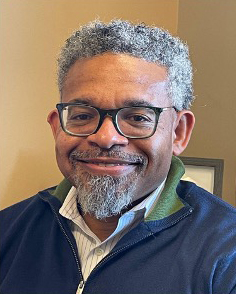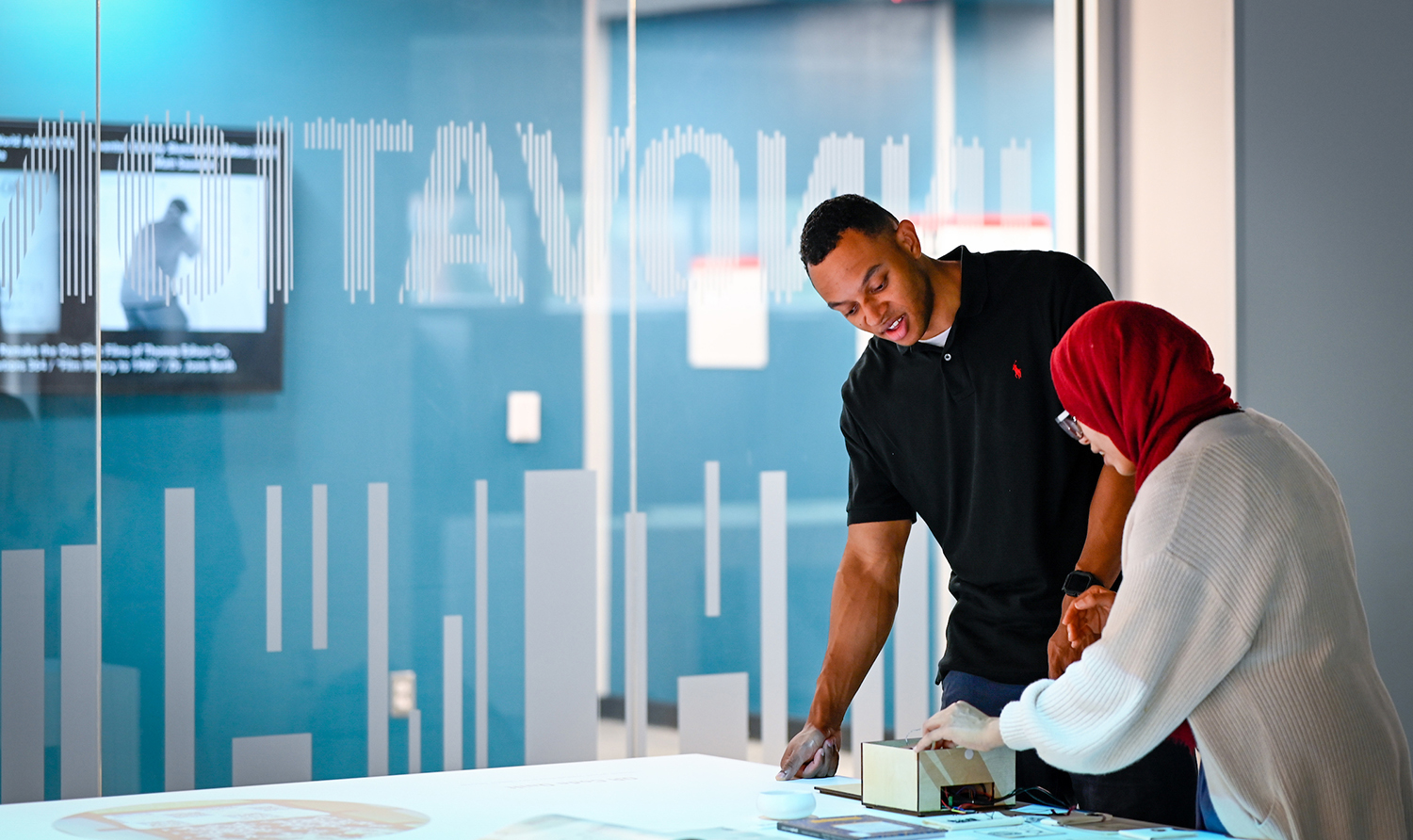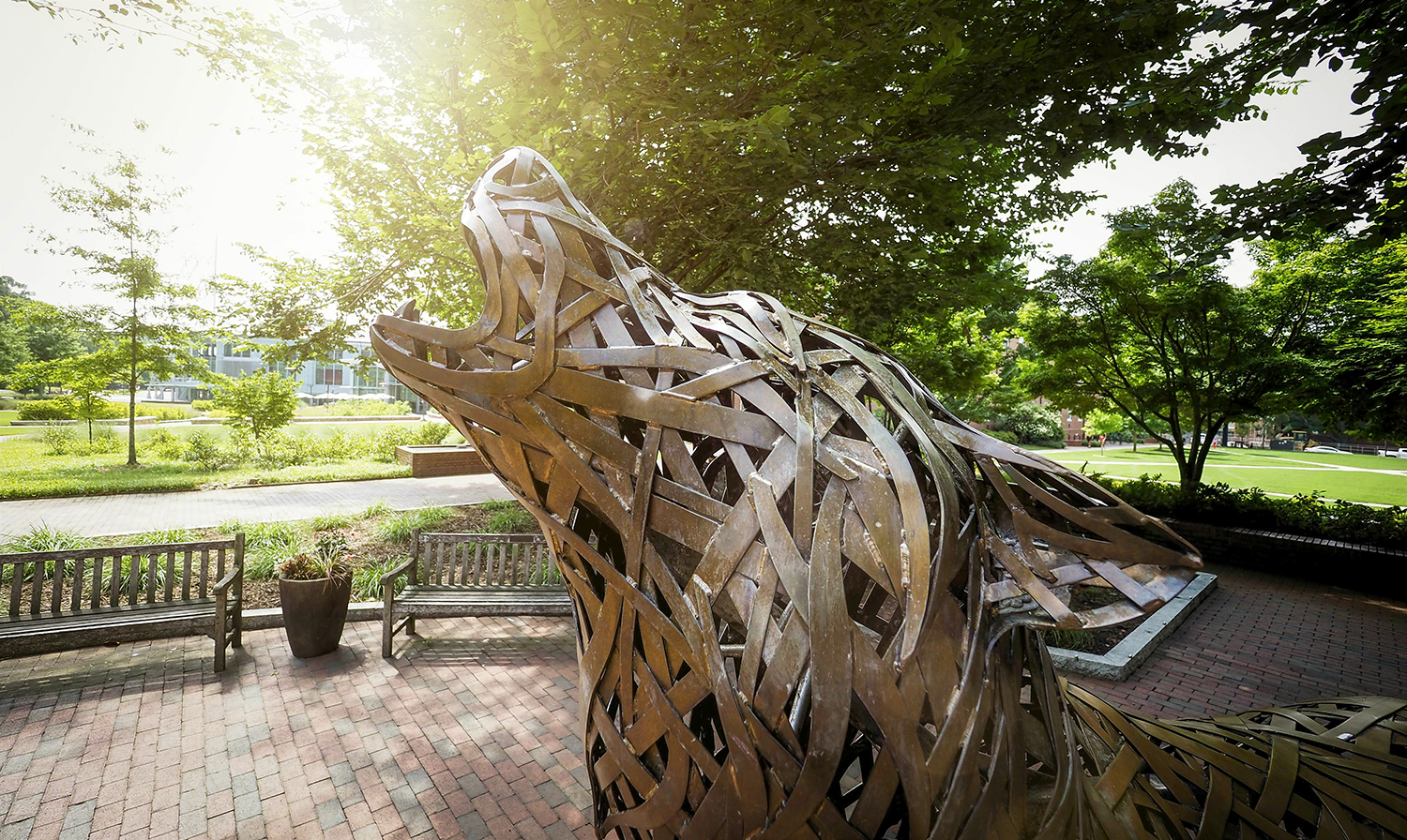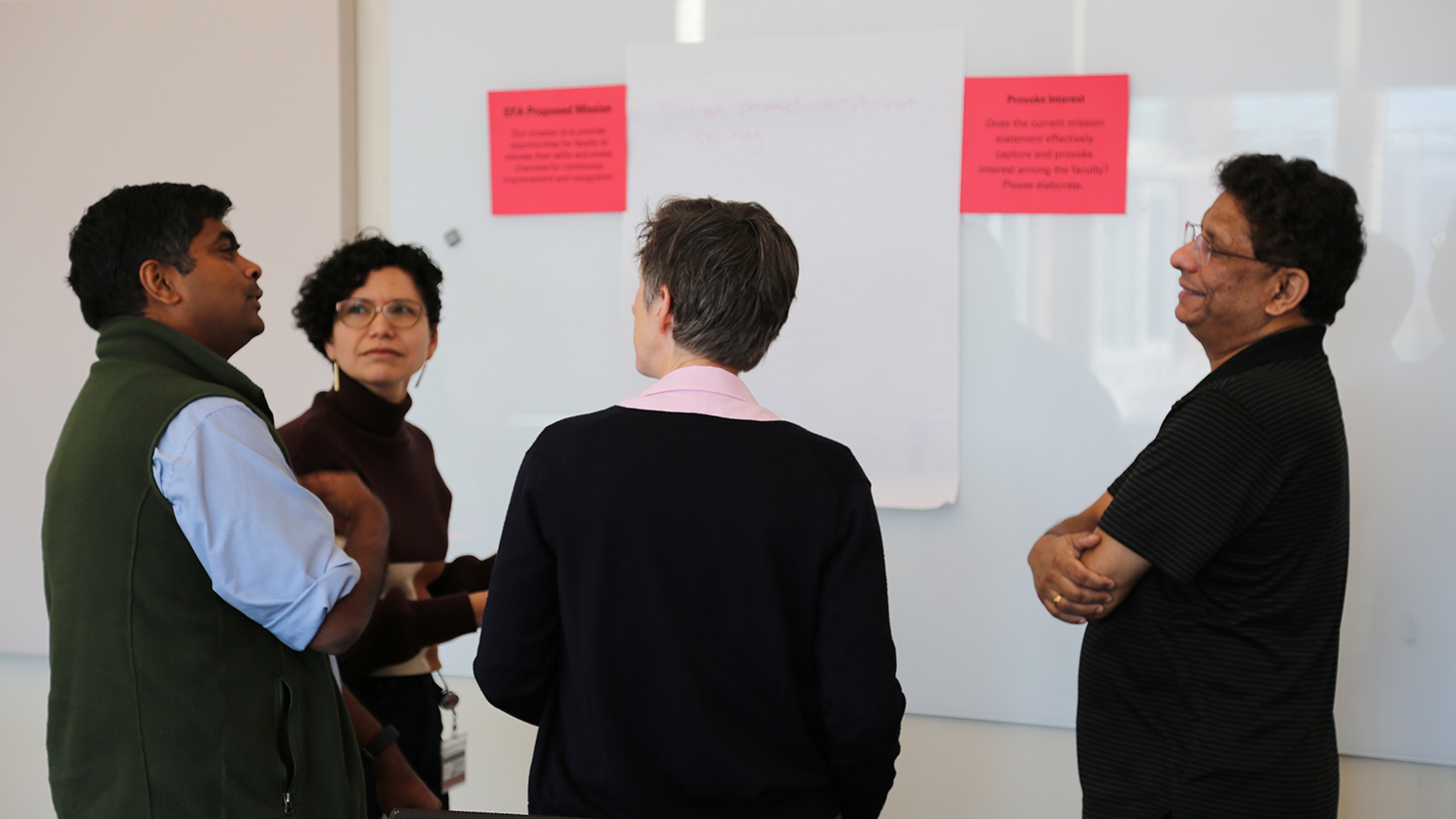Joel Ducoste, the Associate Dean for the Office of Faculty Development and Success, may now be a senior faculty member and administrator in COE, but he was once a junior faculty member submitting an NSF CAREER proposal. Since then, he has gained valuable insights about the dos and don’ts of submitting a proposal. Ducoste understands what NSF panelists are looking for, so we asked him for his advice on the important questions to consider if you are contemplating submitting a proposal.
Can you provide an overview of the NSF CAREER awards and their significance for junior faculty in engineering?
NSF CAREER is a highly prestigious award that junior faculty can apply for. It is designed exclusively for junior faculty in their early stages of their research career and will help them catalyze important work and ideas leading to a career of research in their domain expertise. It is a single investigator research proposal that must highlight the unique contributions and potential solutions that the investigator will bring to a problem that is typically multifaceted and as the name implies, will take a significant part of a faculty member’s career to accomplish.

The NSF CAREER award is supported by all the directorates in NSF including engineering. We encourage all our junior faculty to submit their research career idea to this program as it is limited to junior faculty. An old head like myself (smile) cannot apply for this program. It’s really an opportunity for junior faculty to think long term about their research career and how the specific project research objectives outlined in the CAREER proposal will help the faculty member begin to achieve those career research aspirations.
What was your experience like when you applied for the CAREER award? What would you have done differently?
I thought I had a great project when I applied for the NSF CAREER program. I felt pretty confident about it and thought I had a high chance of getting it. Maybe I was a little too confident as the first year that I applied, I did not get it and got some pretty strong negative reviews about what was wrong with my ideas. I had to eat some crow and realized that I had not thought it through. I had long conversations with faculty mentors about what I needed to fix.
What I did not do at the time of my initial submission was to really think about the word CAREER in the development of my research narrative. While this proposal is a term-limited project, it needs to be a part of a larger narrative stating what the overall research career goals are and how this project will help get you there. So I started from scratch for my second try. I also did not think long and hard about my education component and the broader impacts. My first try focused on what I was going to do as part of my graduate program. But in my second try, I wanted to really be intentional about the impact I could make in STEM. So I also developed an educational program that involved K-12 outreach where those students would learn about the problems I was solving and developed tools to really engage them in the classroom. It actually was fun! I had a lot more respect for 6th and 8th grade science teachers when I worked with them as part of the new project.
What are the key components of a successful NSF CAREER proposal, and what advice do you have for junior faculty in preparing their applications?
First and foremost, the NSF CAREER proposal program is designed to assist junior faculty and give them a shot in the arm, so to speak, to develop as a researcher and educator. It is not a standard proposal. There are common components to an NSF standard proposal, which may confuse faculty to develop standard proposal submission strategies. Like a standard proposal, it must clearly articulate the research goals, objectives and tasks, the intellectual merit, and broader impacts. But unlike the standard proposal, there is an expectation that the goals have a long-term vision, hence the CAREER aspect. It needs to dive into an educational plan that seeks to connect and actually be integrated into the CAREER research plan. Failure to capture these additional requirements has resulted in many CAREER proposals not being selected for funding. Given these additional requirements, I have always advocated for junior faculty to have their proposal read by other faculty with the lens of these additional requirements.
We are fortunate here at NC State to have many past awardees who are willing to share their time, advice and more special time to review junior faculty CAREER proposal drafts. This happens during our office’s CAREER Just-in-time program held every June for participants with CAREER proposal drafts to make any suggested changes offered by faculty reviewers prior to submission at the end of July.
How can junior faculty effectively integrate research and education goals in their NSF CAREER proposals?
So what worked for me is that I proposed a new tool and one week program for a 6th or 8th grade science class to introduce the concepts of drinking water treatment disinfection processes. My CAREER proposal involved the development and use of finite element modeling tools to simulate chemical and physical disinfection systems in drinking water. Since the modeling tools I proposed in my research are far above the knowledge base of 6th and 8th graders, I proposed developing a much simpler finite element modeling tool that would allow users to build a simplified reactor, simulate the flow pattern in that reactor and the disinfection method to disinfect that microorganism moving through that reactor. My tool involved minimal knowledge in FEM ( finite element method). As part of this educational program, I devised an instructional module where I would instruct students about drinking water treatment. I would then spend more time in disinfection systems used in drinking water treatment. Then I would ask students to be divided into consulting teams where they would design the most effective disinfection reactor to achieve the stated goals of their client, which happened to be me.
The entire program would take a week of interaction with the students at the middle school I collaborated with. I also provided an incentive to the student groups. The best design offered by the consulting teams would get a prize. Typically, something that would have significant meaning from their 6th or 8th grade teacher. I ran such a program during my CAREER proposal timeline and several years beyond. I also involved my graduate students in the instruction, as it was part of my professional development for my graduate students.
So from my example, you can see that my CAREER research and educational goals were integrated. I made sure to spell each part out and how lessons learned from my research plan fed into the development of this tool. When thinking about your plan, do the following:
- Consider partnering with a K-12 institution or one that serves those institutions.
- Consider developing new tools, laboratory methods or field components that will educate and train graduate students, undergraduates, K‐12 students, teachers or even community officials and residents.
- Be excited about your plan. It will show if your story is not compelling.
- If there is evidence that your educational approach will improve STEM learning outcomes, you should quote the literature that supports that evidence.
- You should try to select educational institutions or work with communities that serve the underserved or with partners that help broaden the participation of underrepresented students in STEM.
- Finally, it is critical to include an assessment plan to evaluate the effectiveness of the educational programs you are proposing. So if you are not familiar with proper assessment plans, you should speak with a colleague in the College of Education. I did and it made a significant difference.
Well, I was able to receive the CAREER proposal on my second try by doing all this and having others review it to make sure my narrative was clear.
How can junior faculty effectively demonstrate the broader impacts of their research in their NSF CAREER proposals?
This is a critical section and NSF proposals can be eliminated from funding if not done properly from NSF’s point of view. The Broader Impacts section is designed to help showcase how the proposal benefits society at large and some of the specific societal outcomes such as broadening the participation of underrepresented students in STEM. Some serious thought has to be put into this to help explain how the research not only advances the knowledge within the proposed topic but also how it will improve society and important societal outcomes overall. Statements in this section cannot dive into the weeds so that only those with specific domain expertise can understand the relevance and importance of the research. It must be articulated at a level where the public can read and understand the research or educational outcomes of the proposed work.
I have read some broader impacts where the PI (principal investigator) proposed developing a new summer program, new courses or just having underrepresented students participate in REU programs. That kind of Broader Impact work really is old and does not sway review panelists. In fact, when you are considering some programs that you think you would like to propose in your CAREER submission, I think it is best to test it out first. For example, if you are thinking about collaborating with a community or science center, K-12 school, etc., why not test out your ideas first and develop some data that you can use as part of your proposal? Review panels want to know that you are thinking of the real impact and that you have begun investing your time.
If you are struggling to get something going, you should talk with our Engineering Place leadership, who are willing to help and want to see our faculty be successful in sharing the power of engineering with the broader society. I know they can brainstorm some really impactful programs with our faculty and make the Broader Impact section of the proposal really pop.
Can you share any tips or strategies for junior faculty to effectively communicate the potential transformative nature of their research in their NSF CAREER proposals?
My biggest advice is that faculty need to share the 1 page summary and background section with senior colleagues and past awardees of the NSF CAREER proposal. Frankly, if a review panelist is not excited about what the research is trying to do, the rest of the proposal will not be looked at favorably and panelists will begin looking for shortcomings that they can exploit that will lead to no funding for this research.
Below is what NSF panelists are told by NSF when reviewing a proposal:
- What is the potential for the proposed activity to:
- advance knowledge and understanding within its own field or across different fields(Intellectual Merit); and
- benefit society or advance desired societal outcomes (Broader impacts)?
- To what extent do the proposed activities suggest and explore creative, original, or potentially transformative concepts?
- Is the plan for carrying out the proposed activities well-reasoned, well-organized, and based on a sound rationale? Does the plan incorporate a mechanism to assess success?
- How well qualified is the individual, team, or institution to conduct the proposed activities?
- Are there adequate resources available to the PI (either at the home institution or through collaborations) to carry out the proposed activities?
In addition to answering these questions, don’t forget that you need to demonstrate throughout, but especially in the Project Summary, about the integrated nature of the research and educational objectives of your proposal
How can junior faculty effectively demonstrate their potential for leadership and mentorship in their NSF CAREER proposals?
The CAREER proposal is an investment in the individual who will lead the transformative nature of the work that is being proposed over the next 10 years or so. Therefore, there needs to be clear evidence that you are the best person to lead that transformative change.
Panelists may agree that the topic chosen by the faculty member is an important area, and NSF should fund research to solve those problems. But right after you have convinced them of the challenges, they will then ask if you are the best person to lead the research in this area. They will determine the answers to that from how well you have articulated the approaches you propose over the 5 yr time horizon of the proposal. They will look at the investments you have made in prior research and the evidence in making progress towards developing these transformative solutions, and they will look at educational investments to educate the next generation of thought leaders in the Proposed Research area. They want to know that you are fully invested and have made progress towards your career goals. CAREER proposals are different from when I submitted mine more than 20 yrs ago.
If I had to apply today, I would wait till I was in my 3rd year so that I could demonstrate evidence in the research and educational areas to support my investment and pathway to innovation. It is highly critical to provide that initial evidence in today’s CAREER proposal.
What are some best practices for junior faculty to engage with program officers and seek feedback on their NSF CAREER proposals?
It is very important to have a conversation with your program officer. The novelty of your research idea is something you can discuss with them. If they can feel excited about your research, then there is a high likelihood that future CAREER panelists will also be excited about your work. Of course, every panelist will have an opinion on whether that is true. But it has to start with a program manager who will let you know if there could be excitement. Clearly, the program manager will likely not have domain expertise to understand your area of research. So consider developing a 1-2 page white paper or summary that will educate the program manager about the novelty of your work and career aspirations. This will also give them an opportunity to make sure that the specific directorate is the best place to submit your CAREER proposal.
Here are 3 more opportunities for faculty interested in obtaining additional information about submitting a proposal for an NSF CAREER award:
In March, the university will offer a virtual general workshop to guide possible principal investigators with their proposals; likewise, NSF will hold a workshop on several different days in May. OFDS will be offering a COE-specific virtual just-in-time workshop on June 10 from 1-3 p.m. with proposal review by senior faculty to enhance the chances of COE faculty being awarded the NSF CAREER award. (Keep an eye out for more details!)
- Categories:



